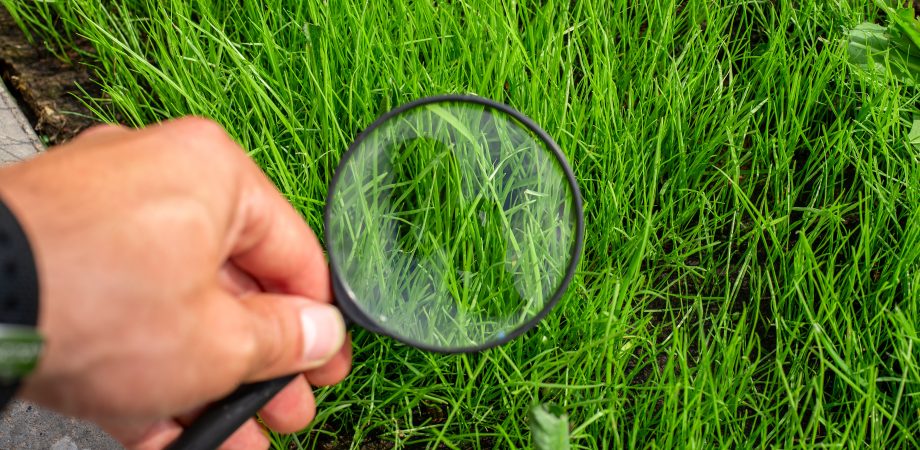How to Investigate a Lawn Problem

One of your customers calls with an ambiguous description of a problem in their lawn, expecting you to immediately know what it is and how to solve it. What should you do?
First, go to the property yourself or send one of your trusted crew members to investigate the problem. While a description or even a photo from a customer can be helpful, it’s no substitute for putting eyes on the lawn yourself. Most homeowners don’t know exactly what to look for when it comes to actually diagnosing an issue.
Once on the property, kneel down to examine the grass up close. If you’re using a ride-on spreader/sprayer, you’ll need to park it and get out on foot to better diagnose the problem. The closer you get, the easier it may be to diagnose the problem just by inspecting the grass blades. Rust diseases, for example, create distinct rust-colored pustules on leaves. Make note of any unusual spots on the grass blades, which could be helpful clues to identifying the issue.
It’s also important to examine the thatch layer of the lawn. Specifically, check for evidence of insects living in the thatch. In the case of insects like chinch bugs, you may find them moving in the thatch layer. With sod webworms, on the other hand, you may simply find their silk-lined tubes (or “webs”) in the thatch layer. It’s also a good idea to tug on a patch of grass and see how easily it comes out. If it pulls up very easily, that’s a sign of root damage that could be caused by grubs or other issues.
Another good practice is to check the moisture level of the soil. Using a moisture meter, you can determine if the lawn is being overwatered or not absorbing enough water. A moisture meter may give you a more accurate answer than a homeowner who doesn’t want to admit that they haven’t been following the irrigation plan you gave them.
In a similar vein, conducting a soil test will help you see if the lawn is nutrient-deficient and determine its pH level. Think of soil testing as an in-depth inspection of a customer’s lawn. A test like Soil Solver shares the amount of nutrients available and whether the soil’s pH level is causing deficiencies. These results help lawn care operators put together fertilizer programs specifically catered to that lawn. Customers will also have peace of mind that their LCOs can address short- and long-term deficiencies with a clear picture. Remember that it’s important to get a composite of the whole area and be consistent with sample depth. You can find more information in our Soil Testing 101 blog post.
When investigating a lawn problem, always look up and around for clues about the source of the issue. Consider how much sun or shade the lawn receives, how low it is, and how the homeowner uses it. While these factors may be out of your control, they’re still helpful to be aware of.
Lastly, think big. Consider the climate of the location and what species of turfgrass grow best there. Is your customer’s lawn one of those species? If not, strategize how you can help their lawn survive the climate—or perhaps, how you can educate your customer on the value of reseeding with an appropriate grass species.
As always, your Advanced Turf Solutions sales representative can help you diagnose tricky lawn problems and find ways to solve them for your customers.







